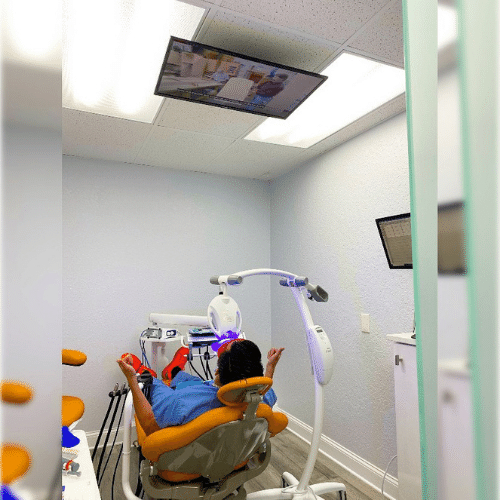- What to Know About Gum Disease
What To Know About Gum Disease in 2022
Unfortunately, Gum Disease impacts so many Americans. Usually, plaque accumulation is the cause of gum disease. This invisible sticky film of bacteria occurs spontaneously on the teeth and gums. Plaque comprises bacteria, which produce toxins that irritate and destroy the gums. Thus, it is critical to brush and floss every day. Additionally, you must visit your dentist on a regular basis.
Below, our dentist in Pinellas Park FL shares the stages, and symptoms of gum disease, as well as how to prevent it from forming and worsening.
The Causes of Gum Disease
Gum disease is caused by the buildup of plaque on your teeth, which hardens into tartar. if not cleaned on a regular basis. Dr. Wade, the best dentist in Pinellas Park FL, shares that this will infect the tissues and bones surrounding and supporting your teeth. Gum disease is mostly caused by two factors: plaque and neglect.
The Progression of Gum Disease
Gum Disease is classified into two phases, the later of which is commonly referred to as mild or advanced.
Gingivitis is the earliest stage of periodontal disease. In its early stages, gingivitis manifests largely as bleeding gums. Our friend Dr. Kacos, the best dentist in Shreveport LA, explains that gingivitis can also impact your body. Gingivitis may often be remedied if diagnosed early by refocusing on and improving regular oral care routines.
Periodontitis is the second stage of periodontal disease, and it can be moderate or severe. Mild periodontitis is likewise characterized by bleeding gums, but also by increased inflammation and the early phases of those gums receding — pushing down or back from the teeth, resulting in the formation of “pockets.” Unlike advanced periodontitis, the symptoms of moderate periodontitis are still restricted to your gums. As long as this is the case and it is caught early enough, it may be reversed with good dental hygiene at home and by your Pinellas Park dentist.
Advanced periodontitis is a very other story. Periodontitis, in its most severe form, destroys both the gums and the bone structure in your jaw that supports your teeth. You will observe loosened teeth and even teeth coming out at this stage, in addition to bleeding and developing gum pockets. Tooth extraction may be necessary if bone tissue is not recovered during therapy.
The Symptoms of Gum Disease
There are various signs of gum disease in general, in addition to the stage-specific symptoms and presentations of periodontal disease discussed above. This constellation of symptoms implies an increased risk of gingivitis and periodontitis and should urge an early visit with a dentist near me. The following are some of the signs of gum disease:
- Gums that are swollen, painful, and irritated
- Gum bleeding when flossing and brushing
Gums that are receding - Bad breath that persists
- Chewing discomfort
- Teeth that be loose and sensitive
Gum Disease Prevention
There are four basic methods to avoiding periodontal disease, which can lead to the loss of gum tissue, bone material, and teeth if left untreated:
- First, brush your teeth, gums, and tongue at least twice a day.
- Next, floss at least once a day.
- Also, after brushing and cleaning between your teeth, rinse your mouth and teeth with antimicrobial mouthwash.
- Lastly, attend routine dental exams twice a year, as well as expert tooth cleanings once a year.
In conclusion, Gum Disease is preventable. Additionally, it can be manageable when treated promptly. If you have questions about Gum Disease, please contact our dentist in Pinellas Park today.










